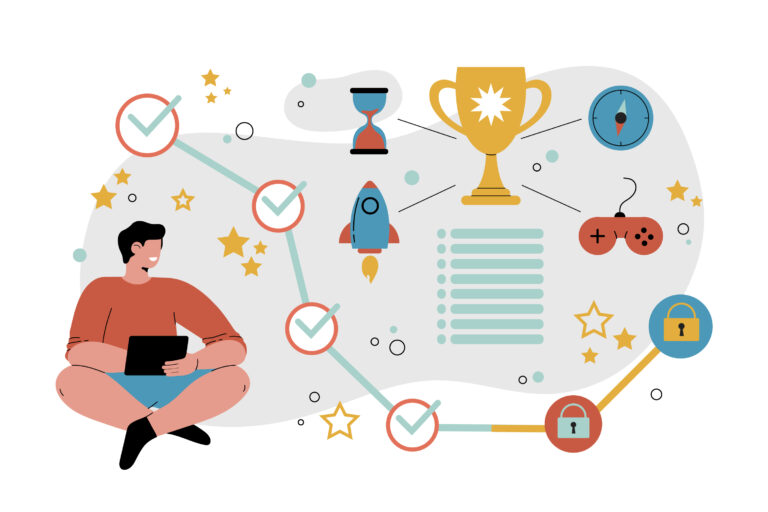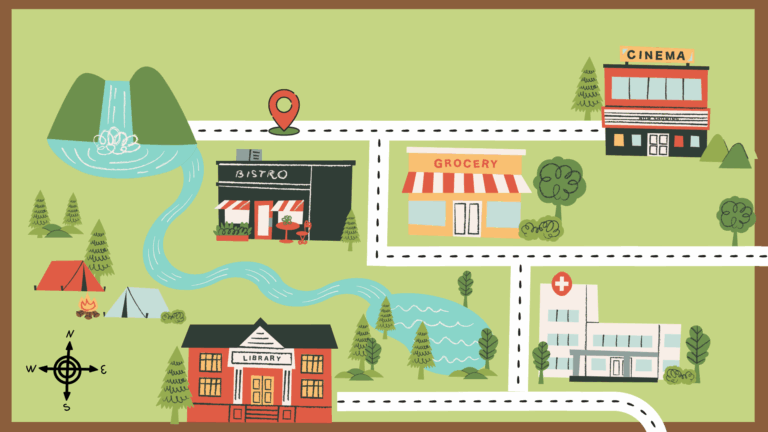Gamification has in recent years become a game-changer for educators, designers, and learning facilitators. But the task is not always easy: how do you go beyond simple points and badges and actually motivate people to play and learn? That’s where Yu-kai Chou’s Octalysis Framework comes in. Whether you’re building an escape game for language learners, a story-based math quest, or a science mystery, the Octalysis Framework can provide the tools to make a learning experience truly engaging.
What Is the Octalysis Framework?
The Octalysis Framework is built around 8 core drives that motivate human behaviour. When thoughtfully applied, these drives help you design learning experiences that are immersive, meaningful, and enjoyable.

- Epic Meaning & Calling
People want to feel part of something bigger.
Start with a compelling story. Your players aren’t just solving exercises, they’re heroes on a mission. Maybe they’re time travelers saving history, or a secret team chosen to stop a knowledge blackout. Frame the content as part of a meaningful quest.
- Development & Accomplishment
Progress is powerful. So is the sense of achievement.
Use progression bars, levels, badges, or a quest list. Make challenges increase in difficulty and celebrate mastery. You could even include a leaderboard, but be cautious: not every learner is motivated by competition. Make rewards visible and motivating.
- Empowerment of Creativity & Feedback
People love solving problems in their own way.
Create open-ended challenges where multiple solutions are possible. Offer immediate feedback, and use the “Milestone Unlock” approach: learners unlock new quests or content only after solving prior ones. This boosts both curiosity and a sense of autonomy.
- Ownership & Possession
We care more about what we feel is “ours.”
Let players customize avatars, collect virtual items, or “own” parts of the game world. Even in educational settings, small tokens of progress (e.g., medals, virtual pets, or inventory items) can make a big difference.
- Social Influence & Relatedness
Learning is social. We thrive with others.
Include group quests, peer challenges, or team missions. Encourage learners to collaborate to solve puzzles or compete in friendly challenges. Showcasing each player’s achievements in a trophy shelf can also boost motivation.
- Scarcity & Impatience
We want what we can’t (yet) have.
Add limited-time challenges, foreshadow exciting content that’s “not available yet,” or let players “unlock” characters, clues, or chapters as they progress. This adds urgency and keeps curiosity high.
- Unpredictability & Curiosity
People love surprises.
Use plot twists, easter eggs, or mystery boxes. Don’t reveal everything upfront. Hide secrets or jokes in visuals and stories that reward exploration. Add “sudden rewards” to keep learners on their toes.
- Loss & Avoidance
Nobody likes to lose.
Include countdown timers or consequences for inaction (e.g., “If you don’t solve this puzzle, your team loses a clue!”). Be careful: this drive is powerful, but overusing it can cause stress. Use it sparingly, for stakes that feel fun rather than punishing.
From Theory to Practice: Your Next Steps
Whether you’re building a full-fledged app or a low-tech classroom activity, here’s how to start:
- Choose a story: What’s the big mission?
- Map your learning content onto progression paths, challenges, and feedback.
- Use the 8 drives to ask: Why would someone care about this? What keeps them going?
- Prototype small: A single lesson or a shorter escape game can be your sandbox.
- Test & adapt: Not all learners are motivated the same way. Build in flexibility.
Final Thought: It’s About Meaningful Fun
Gamification isn’t about turning everything into a game. It’s about tapping into what makes games compelling to create deep, enjoyable learning experiences.
So whether your learners are 10 or 50 years old, tackling algebra or art history, let your imagination run wild, and build the kind of learning that makes people say: “Can we play again tomorrow?”
Bibliography:
- Y. Chou, Actionable gamification: Beyond points, badges, and leaderboards. Packt Publishing Ltd, 2019.
- Y. Chou, The Octalysis Framework for Gamification & Behavioral Design. 2015. https://yukaichou.com/gamification-examples/octalysis-complete-gamification-framework/



